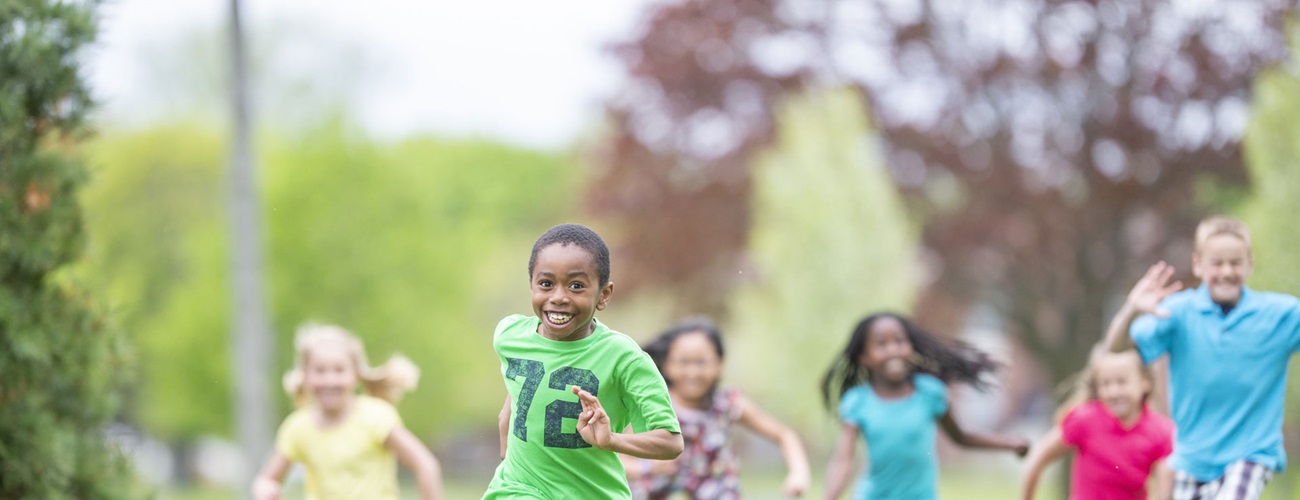9 Tips to Help Kids Keep Safe During Summer
Children look forward to the summer months, when a break from school gives them a chance to enjoy the outdoors, travel and relax with friends and family. However, it’s important to ensure that children stay safe while they’re having fun in the sun.
Specialists from Johns Hopkins All Children’s Hospital and Johns Hopkins Children’s Center offer nine recommendations for keeping kids safe this summer season.
Continue to Practice Hand Hygiene
"Although cold and flu season is behind us, encouraging your kids to practice good hand hygiene throughout the year will help to keep them healthier no matter the season," says Allison Messina, chief of infectious disease at Johns Hopkins All Children’s Hospital. “This is why it’s important to properly wash your hands for 20 seconds with soap and water or use alcohol-based hand sanitizer when traveling.”
Germs can live on surfaces we touch, and many viruses are spread when an infected person releases virus particles into the air by breathing, talking, coughing or sneezing.
Keep Children Away from Burn Hazards
Fireworks can be extremely dangerous when not handled properly. As many gear up to celebrate occasions throughout the summer with fireworks and sparklers, Erica Hodgman, director of the Johns Hopkins Children’s Center's Pediatric Burn Center, explains the risks. “They can explode and cause significant tissue damage, or light clothes and nearby structures on fire,” she says. “A lot of people don’t realize how hot sparklers can get, and give them to young children to play with. They can get as hot or hotter than a welding torch.”
Grills and bonfires can also pose serious danger to children, who can fall near them and get seriously burned. “There should be a 5-foot, child-free zone around them at all times,” says Hodgman. “It is also important to never pour anything flammable onto a fire, like gasoline or lighter fluid. All fires should be thoroughly extinguished with water since embers can stay hot, even overnight.”
Avoid Trampolines
Kids may love bouncing on a trampoline, but the American Academy of Pediatrics strongly discourages the home use of trampolines. Wassam Rahman, medical director of Johns Hopkins All Children’s Hospital Pediatric Emergency Center, says that some of the common injuries seen year-round in the emergency center are related to trampolines, including sprains, broken bones, head and neck injuries, and in rare cases, severe neurological injuries.
“Most trampoline injuries occur when there are multiple children jumping. It’s hard to consistently predict the direction of the jump and landing — especially when there is more than one jumper,” he says. “It’s quite easy to sustain an injury by landing the wrong way, colliding with another child, getting caught in the equipment or just falling off the trampoline.”
Dress Children in Sun Protective Clothing and Apply Sunscreen
Although feeling the summer sun on your skin can be pleasant, sunburn is not. During the summer, ultraviolet rays are at their strongest, and children under the age of 18 are the most at risk for skin damage. “I would never let my child go outside without sun protective clothing and sunscreen,” says Anna Grossberg, the director of pediatric dermatology at Johns Hopkins Children’s Center.
Sun-protective clothing with a UPF (ultraviolet protection factor) of 50 is an excellent source of protection from harmful ultraviolet rays, in addition to wearing hats, sunglasses, and other shading. For areas that cannot be covered, be sure to apply a broad-spectrum, water-resistant sunscreen with an SPF (sun protection factor) of at least 30 to all exposed skin. Re-apply about every two hours and after swimming or sweating.
Avoid Using Wire Grill Brushes
Summer grilling can be the mouthwatering highlight of the summer. But how you clean the grill in between uses could bring about some problems. Wire grill brushes are popular, but are not the safest option, says Meghan Martin, pediatric emergency medicine physician at Johns Hopkins All Children’s Hospital.
“I would recommend avoiding grill brushes with metal wires,” she says. “These wires can become dislodged and end up in the food that was cooked on the grill. This can cause injuries to the mouth and throat and intestines. Swap out your metal wire grill brush for a different kind to easily avoid this risk.”
Ensure Children Wear a Helmet While on Wheels and Supervise Them Near Golf Carts
Wearing a helmet during activities such as riding a bicycle, skateboard or electric scooter can prevent head and brain injuries in children. A helmet should be worn properly, and should only be used if it meets the bicycle helmet safety standards of the U.S. Consumer Product Safety Commission. Studies show that properly fitted helmets are proven to reduce the risk of head injuries.
Leticia Ryan, director of pediatric emergency medicine at Johns Hopkins Children’s Center, suggests parents can play a role in getting their children to wear a helmet by wearing helmets themselves to set an example of safe practices.
Golf cart-related injuries occur at double the rate in children as they do in adults, according to the American Academy of Pediatrics. Danielle Mercurio, pediatric emergency medicine physician at Johns Hopkins All Children’s Hospital, explains the hazards. “There are too many things that can go wrong with small, fast, open vehicles that can easily rollover, or eject passengers,” she says. “Gas and electric carts can get up to 25 miles per hour, or higher if the owner has made modifications to the engine.”
To prevent injuries, children must wear seat belts at all times, and the driver must be legally licensed in the state of operation. Drugs or alcohol should never be involved when driving a golf cart.
Be Mindful of Bugs That Thrive During the Summer
Summer is often the peak season for ticks and insects such as mosquitoes, which can carry diseases. To prevent bites, wear long sleeves and pants tucked into socks when in wooded or grassy areas, along with close-toed shoes. Use Environmental Protection Agency-registered insect repellents and follow instructions for use and age limits. "Once inside, check your child for ticks and remove them using tweezers and pulling firmly upward," says Erica Prochaska, M.D., pediatric infectious diseases specialist with Johns Hopkins Children’s Center. "Kids should also bathe or shower within a few hours of coming inside, which could prevent ticks from latching on."
Encourage Water Safety with Children
In the summer temperatures, children may want to escape the heat by dipping in a lake or pond. But those areas can be breeding grounds for dangerous bacteria and other organisms. For instance, “brain-eating amoeba” (Naegleria fowleri) can infect a person by entering through the nose while under a contaminated fresh water source.
Patrick Mularoni, a pediatric emergency medicine physician at Johns Hopkins All Children’s Hospital, suggests safety in these and other water areas. “Be careful entering water if you have open wounds or cuts, as bacteria can enter the body and potentially cause an infection if the water is contaminated with bacteria,” he says. “No matter the water source, it’s always important to be aware of your surroundings and practice water safety.”
Consider the following tips for additional water safety:
- Designate a water-watcher.
- Use life jackets on boats, around open bodies of water or when participating in water sports.
- Avoid rip currents at the beach.
- Never swim alone or leave a child unattended near the water.
- Secure pool gates and any entries to water sources.
- Take swim lessons.
Additionally, splash pads are public aquatic venues that spray water to cool people off, and are sometimes considered a safer alternative to a traditional pool due to the decreased drowning risk. However, since the water sprays, is collected in drains and immediately recirculates back through the spray jets, splash pads may not be properly disinfected, making the water contaminated with bacteria and germs from people’s bodies.
Stay Hydrated, and Watch for Signs of Heat Exhaustion
Summer is the time for hot temperatures and outdoor play. When added together, it could also mean dehydration and heat exhaustion or heat stroke. This is especially true for children because their bodies don’t cool down as fast as adults. “Make sure children always have a filled water bottle with them,” says Brandon Smith, associate medical director of the Harriet Lane Clinic at Johns Hopkins Children’s Center. “Allow your child to choose a fun water bottle and/or straw, and stick to water — not soda or juice.”
He suggests the following amounts of water each day (depending on exact age, medical conditions, activity levels and the weather):
- 6 months and older: 0.5–1 cup a day
- Toddlers: up to 4 cups a day
- School-aged children: up to 8 cups a day
- Teens: 8–12 cups a day
Danielle Hirsch, a pediatric emergency medicine physician at Johns Hopkins All Children’s, agrees. “No matter if you are in the backyard, at the beach or taking a walk outside, you need water to avoid dehydration,” she says. “When out in the heat, your body loses fluids and electrolytes through sweat, and if you lose too much fluid and salt, you can become dehydrated.”






